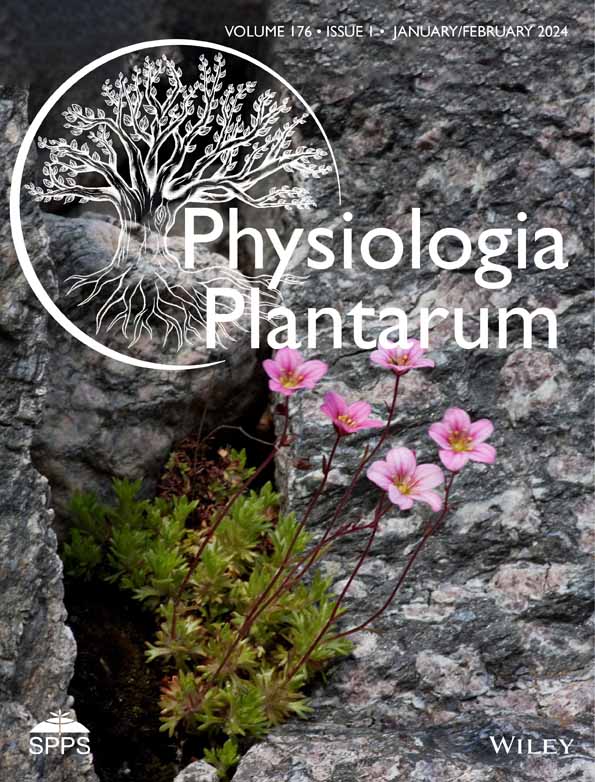Influence of magnesium deficiency on rates of leaf expansion, starch and sucrose accumulation, and net assimilation in Phaseolus vulgaris
IF 3.6
2区 生物学
Q1 PLANT SCIENCES
引用次数: 80
Abstract
Twenty one-day-old Phaseolus vulgaris‘Saxa’plants were cultured in a growth chamber and the plants supplied with either a complete or a Mg-free nutrient solution. From 6 days after transfer to the Mg-free solution, the rate of increase of the area of the second trifoliate leaf was considerably reduced; by day 11 the sucrose concentration in the first trifoliate leaf had increased 6. 2-fold at the end of the dark period and 4. 6-fold after the light period as compared with the control plants. Corresponding starch concentrations increased 6. 6-fold and 2. 9-fold respectively. After days 5 to 6 the assimilation rates declined in the first trifoliate leaf of the plants showing deficiency, in comparison with the plants fully supplied with nutrients; respiration increased during darkness. The reduction in net assimilation rate was to a great extent reversible after resupply of magnesium. The reduction of magnesium concentration in the deficient plants was much more marked in the expanding leaves than in the mature primary leaves and roots. Sucrose and starch accumulation did not occur when the first trifoliate leaf was partially shaded, although magnesium concentration, as in the unshaded leaves, was reduced to 13% of that of the control plants. The consequences of magnesium deficiency in the expanding first trifoliate leaf are discussed in terms of the possibility of sink limitation.缺镁对菜豆叶片膨胀、淀粉和蔗糖积累及净同化速率的影响
将21株1日龄的菜豆(Phaseolus vulgaris’saxa)植株置于生长室中培养,分别给予完全营养液和无mg营养液。从转移到无mg溶液6 d开始,第二三叶面积的增长速度明显降低;到第11天,三叶第1叶的蔗糖浓度增加了6。黑暗期结束时是2倍,4倍。光照期后是对照植株的6倍。相应的淀粉浓度增加6。6折和2。分别为9倍。第5 ~ 6天,与营养充足的植株相比,营养不足植株的第一三叶同化率下降;呼吸在黑暗中增加。补充镁后,净同化率的降低在很大程度上是可逆的。缺镁植株膨大叶片中镁浓度的降低明显高于成熟初叶和根。当第一片三叶草叶片部分遮荫时,蔗糖和淀粉的积累没有发生,尽管镁浓度与未遮荫叶片一样降低到对照植株的13%。从汇限制的可能性出发,讨论了初生三叶草叶片缺镁的后果。
本文章由计算机程序翻译,如有差异,请以英文原文为准。
求助全文
约1分钟内获得全文
求助全文
来源期刊

Physiologia plantarum
生物-植物科学
CiteScore
11.00
自引率
3.10%
发文量
224
审稿时长
3.9 months
期刊介绍:
Physiologia Plantarum is an international journal committed to publishing the best full-length original research papers that advance our understanding of primary mechanisms of plant development, growth and productivity as well as plant interactions with the biotic and abiotic environment. All organisational levels of experimental plant biology – from molecular and cell biology, biochemistry and biophysics to ecophysiology and global change biology – fall within the scope of the journal. The content is distributed between 5 main subject areas supervised by Subject Editors specialised in the respective domain: (1) biochemistry and metabolism, (2) ecophysiology, stress and adaptation, (3) uptake, transport and assimilation, (4) development, growth and differentiation, (5) photobiology and photosynthesis.
 求助内容:
求助内容: 应助结果提醒方式:
应助结果提醒方式:


